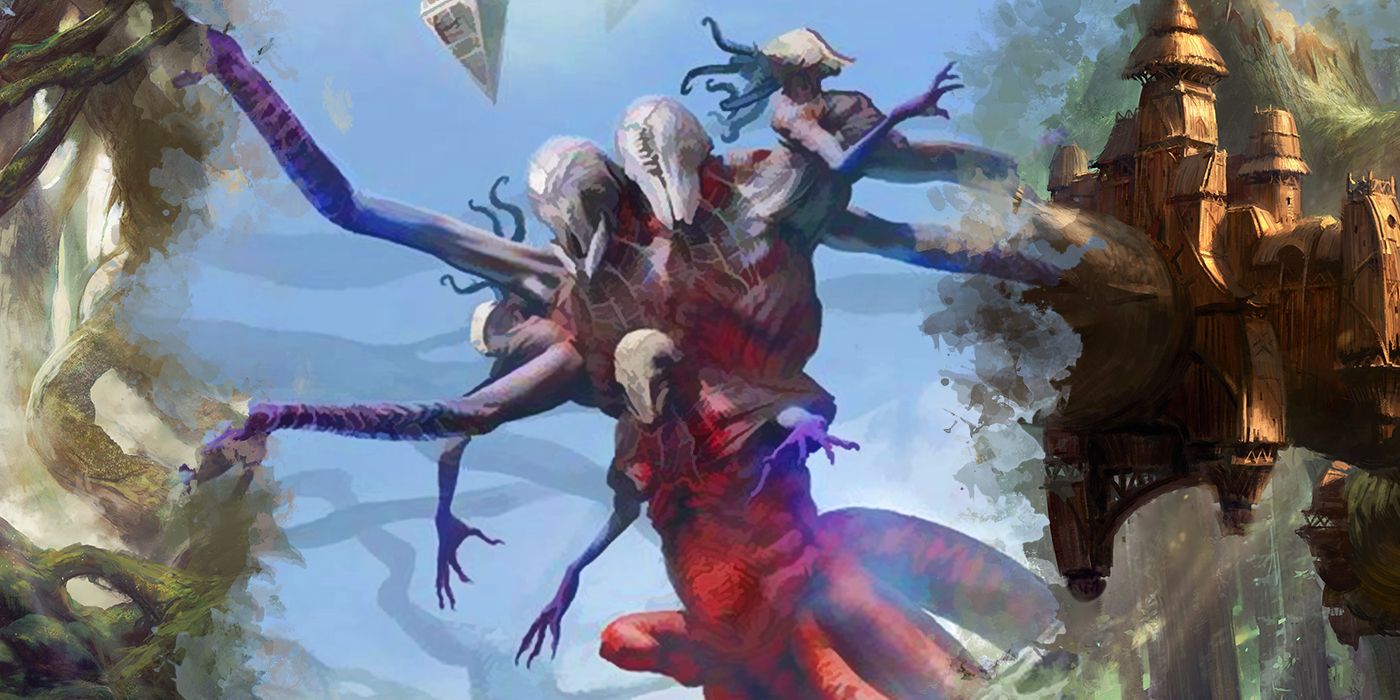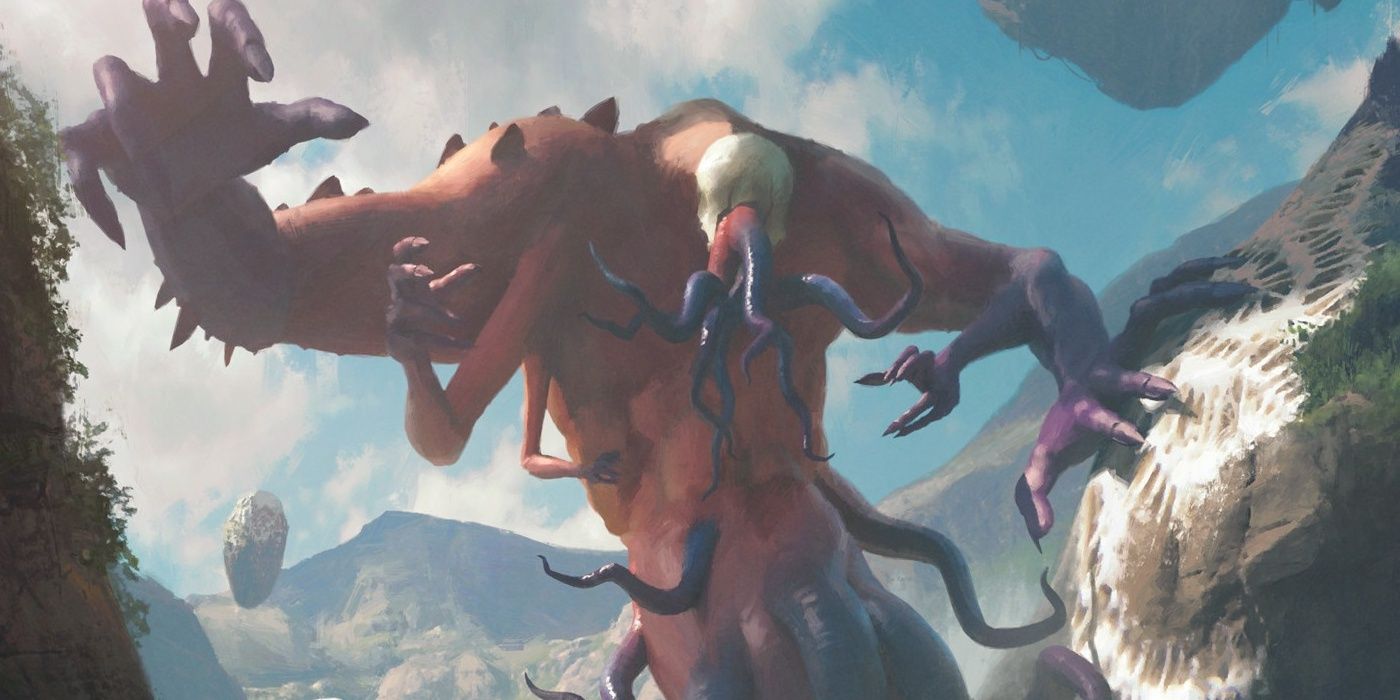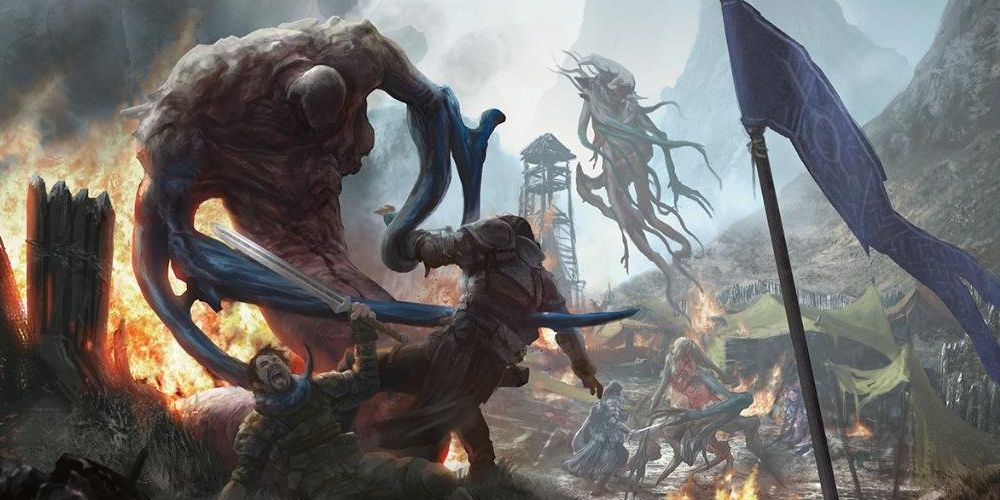In Wizards of the Coast's Magic: The Gathering, the Eldrazi are the titanic nightmares lurking between the planes, and in the game, their power is undeniable. The Eldrazi are the game's take on the cosmic horror trope, which was largely pioneered by H.P. Lovecraft with his famed Cthulhu mythos. The Eldrazi were first introduced in the Rise of the Eldrazi set in 2010, and they have been wreaking havoc on Zendikar, their plane-wide prison, ever since.
Here's what you need to know about the Eldrazi and how they're represented in Magic: The Gathering.
Horrors From In Between
The Eldrazi are among the oldest races in the entire multiverse, much older than any elf sage or treefolk. In fact, these giants predate the entire concept of colored mana, meaning they are all colorless by nature. They are native to a place that no other known race calls home: The Blind Eternities. This is highly unusual, since the Blind Eternities are not a plane or a cohesive world; it's the raw, primordial fabric of reality where the tangible and intangible intermingle, and the past, present, and future have no meaning. Here, mountains of emotions, lakes of memory, forests of ideas, blends of yesterday and despair and much more are thrown together. Nothing is supposed to live there. But the Eldrazi do.
These creatures don't find much sustenance in their bizarre home, though, so they travel the multiverse and devour the colored mana of the many planes. One by one, planes fell to these creatures, leeched dry and left for dead. At some point, the Eldrazi found their way to Zendikar, a wild plane rich in mana. This is where the planeswalkers got their first real taste of the Eldrazi.
In the Blind Eternities, the Eldrazi are formless and intangible, but on a plane like Zendikar, they have solid forms. Sometimes they are grotesquely humanoid, other times, they are indescribable. Generally, they are grouped into the Ulamog, Kozilek and Emrakul broods. Ulamog Eldrazi are often humanoid, often with four arms and suckerless tentacles for legs or on their bodies at odd places. They also have featureless, skull-like heads. Kozilek broods are more angular and have chitinous plating, as well as floating, rocky body part and pointed horns on their heads. Emrakul Eldrazi, meanwhile, are even more beast-like and feature spongy, jellyfish-like bodies and arms and legs in bunches. No matter their appearance, though, all Eldrazi are deadly, and always ravenous, never stopping to communicate or negotiate with other races.
Eldrazi In The Game
In the game, the Eldrazi have undergone some evolution in how they live and fight, but there are a few constants. These creatures are always colorless, such as those in the Rise of the Eldrazi set, which all have generic mana costs. In fact, they're the first non-artifact creatures to have no color in their mana costs. By the time Battle For Zendikar came around, the Eldrazi started having colored mana symbols in their costs, but they also had the Devoid keyword, meaning that they are always considered colorless. And in Oath of the Gatewatch, this race showcased the brand-new colorless mana symbol for mana costs, which must be paid with colorless mana. This symbol also appeared on the new Wastes basic land card.
In the Rise of the Eldrazi set, the three Titans appeared on legendary cards, each with devastating abilities that trigger when they are cast, rather than when they enter the battlefield. This helps them circumvent counterspells somewhat. Other giant Eldrazi are often 7/7 or even bigger, and they all have the Annihilator ability. This devastating ability forces the defending player to sacrifice a specified number of permanents when the Eldrazi attacks, thinning out their board state before blockers are even declared. Hand of Emrakul has Annihilator 1, while Pathrazer of Ulamog has Annihilator 3 and Emrakul itself has an incredible Annihilator 6. Just two attacks may be enough to erase a defending player's entire board.
In the Battle for Zendikar block, the Eldrazi are represented more evenly across all converted mana costs (as opposed to just the huge ones and their tiny support staff), and they're now even hungrier. Instead of annihilating everything, these evolved Eldrazi can use Ingest to exile cards from the top of the defending player's library. Then, other Eldrazi, the ones with the Processor creature type, can put an opponent's exiled cards back into their graveyard and reap some benefits, such as creating creature tokens or dealing direct damage to a target.



